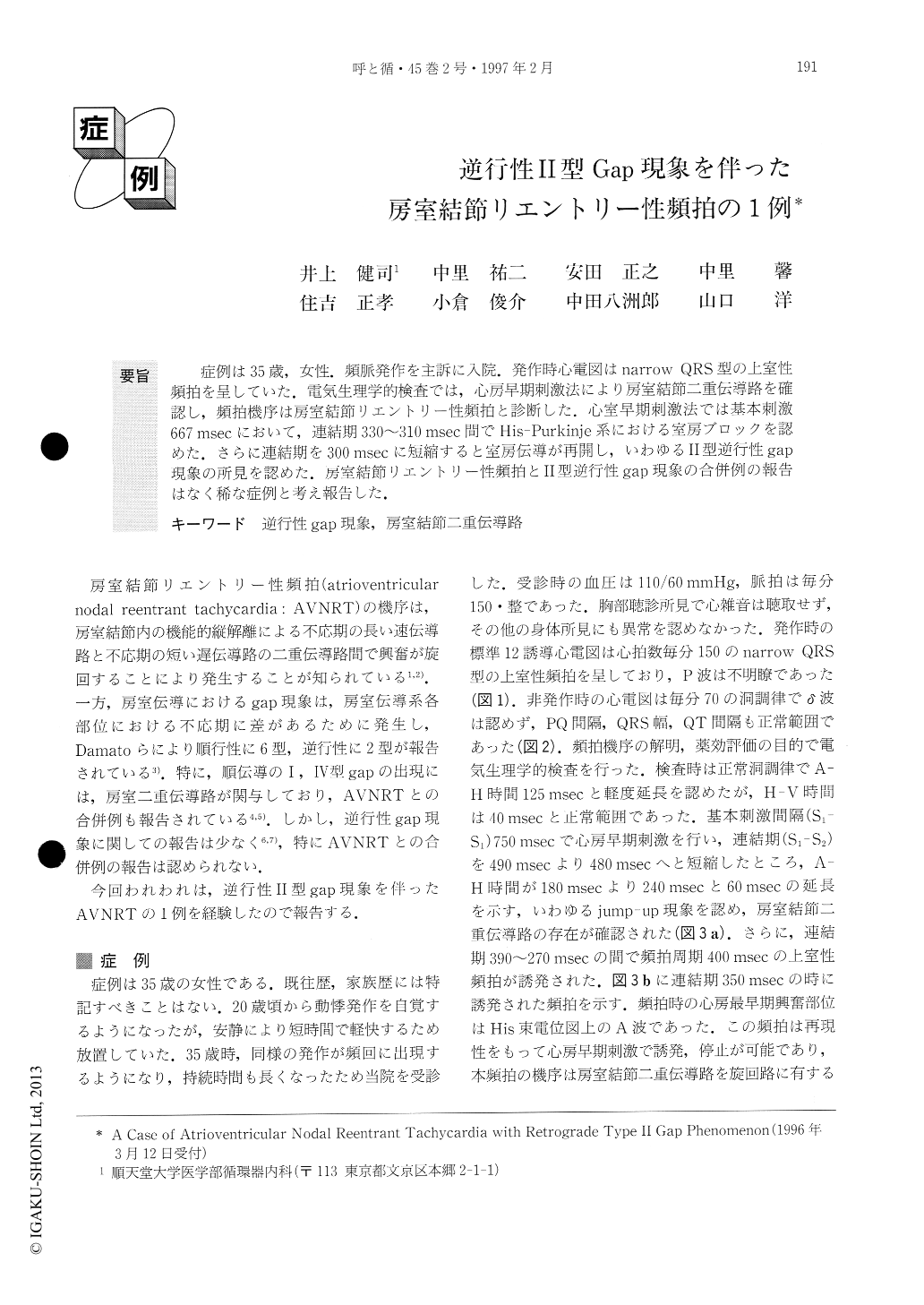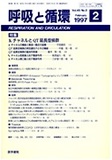Japanese
English
- 有料閲覧
- Abstract 文献概要
- 1ページ目 Look Inside
症例は35歳,女性.頻脈発作を主訴に入院.発作時心電図はnarrow QRS型の上室性頻拍を呈していた.電気生理学的検査では,心房早期刺激法により房室結節二重伝導路を確認し,頻拍機序は房室結節リエントリー性頻拍と診断した.心室早期刺激法では基本刺激667 msecにおいて,連結期330〜310 msec間でHis-Purkinje系における室房ブロックを認めた.さらに連結期を300 msecに短縮すると室房伝導が再開し,いわゆるII型逆行性gap現象の所見を認めた.房室結節リエントリー性頻拍とII型逆行性gap現象の合併例の報告はなく稀な症例と考え報告した.
A 35-year-old female was admitted to our hospital with the complaint of palpitations. An electrocardio-gram revealed a narrow QRS tachycardia. An atrial extra stimulation study disclosed dual atrioventricular pathways. Our diagnosis was atrioventricular nodal reentrant tachycardia (AVNRT). During a ventricular extra stimulation study at the basic cycle length of 667 msec, a ventricular premature depolarization with a coupling interval of 330 msec induced a retrograde block in the His-Purkinje system, which was observed until the coupling interval declined to 310 msec. When the coupling interval reached 300 msec, the retrograde con-duction resumed. This was diagnosed as a retrograde type-II gap phenomenon. Coexistance of AVNRT and a retrograde type-II gap phenomenon is rare.

Copyright © 1997, Igaku-Shoin Ltd. All rights reserved.


